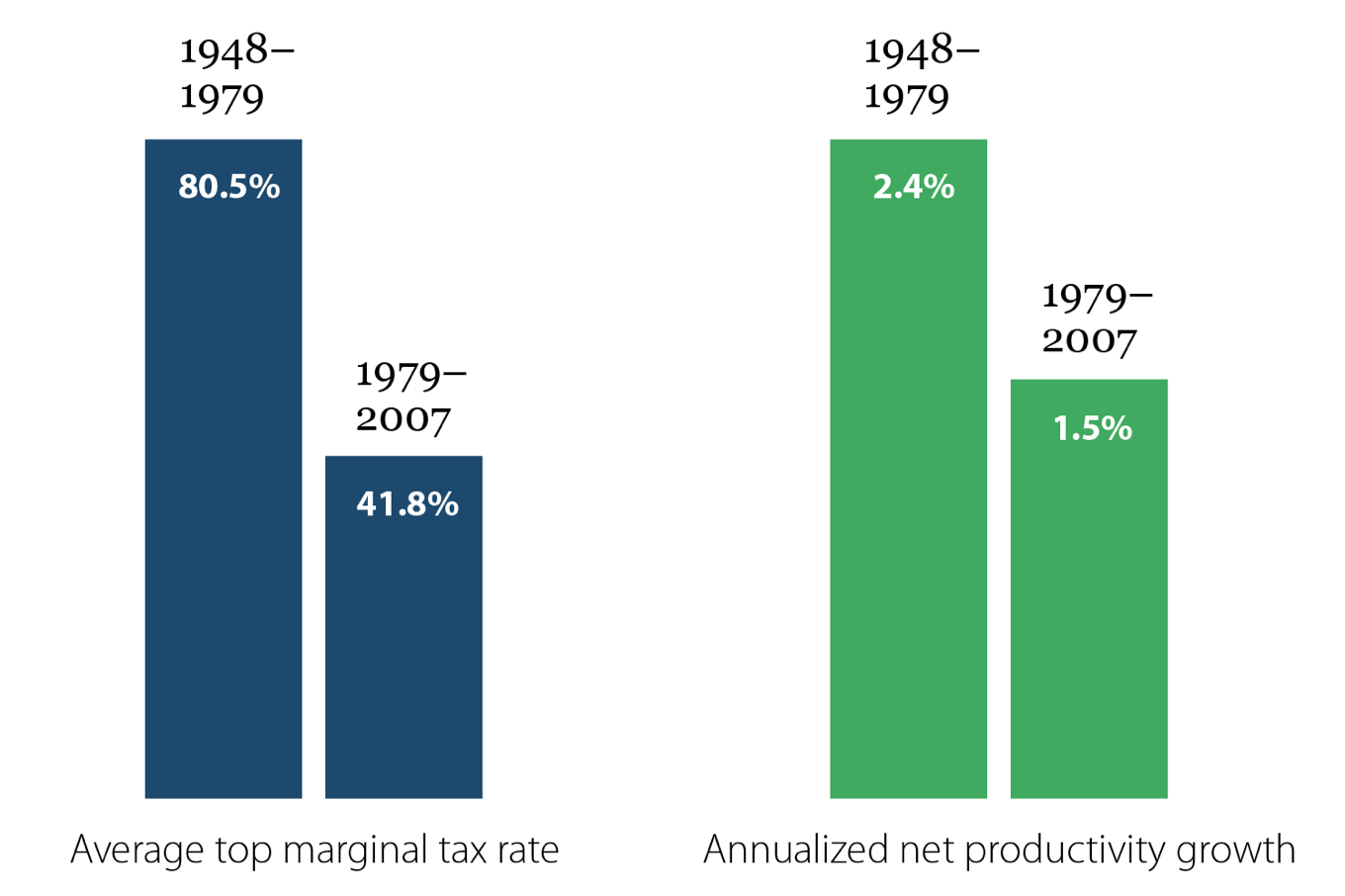The coming year is likely to see repeated calls from the Republican majorities in both houses of Congress for “tax reform” that leads to lower top tax rates, for both individuals and corporations. The claim made on behalf of these policy proposals is that lower top tax rates will lead to accelerated economic growth. One key problem with such claims is that over the past generation a huge and growing wedge has appeared between economy-wide growth rates and the growth rates of the living standards of low- and middle-income households. This wedge means that even successful efforts to boost economy-wide growth rates do disappointingly little to boost incomes for the vast majority of Americans.
And an even bigger problem with such claims is that lower top tax rates just are not associated with more rapid economic growth. The figure below shows average top tax rates and average productivity growth (how much output is produced in the average hour of work in the economy) for two periods: 1948-1979 and 1979-2007. The earlier period saw significantly higher average top tax rates and significantly faster productivity growth. Obviously many variables will affect productivity growth besides top tax rates, but this data makes clear that magical growth bonanzas cannot be had simply by slashing top tax rates. Policymakers who are really serious about spurring growth—both overall and for the vast majority of Americans—should look for solutions besides lowering the rates paid by the highest-income households.
Tax Cuts Didn’t Lead to Faster Growth: Average top marginal tax rate and annualized productivity growth, 1948–1979 and 1979–2007
| Year | Average top marginal tax rate | Annualized net productivity growth |
|---|---|---|
| 1948–1979 | 80.5% | 2.4% |
| 1979–2007 | 41.8% | 1.5% |

Note: Net productivity is used as the basis for the calculation of productivity growth. "Net productivity" is the growth of output of goods and services less depreciation per hour worked.
Source: EPI analysis of Bureau of Labor Statistics and Tax Policy Center data
Source: EPI analysis of unpublished Total Economy Productivity data from the Bureau of Labor Statistics and Tax Policy Center's Historical Individual Income Tax Parameters
